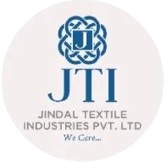- Model Town, Panipat, Haryana
info@jindaltex.com
Textile Fabric Supplier: The Ultimate Guide To Sourcing Quality Materials
Posted by Admin on September, 03, 2025
In the dazzling world of fashion, interior design, and creative ventures, the spotlight often shines on the final product the stunning gown on the runway, the cozy throw blanket in a magazine, or the innovative techwear jacket. But behind every beautiful creation lies a critical, yet often overlooked, foundation: the Textile fabric supplier. These partners are the essential bridge between raw material and remarkable design, and choosing the right one can make or break your project, brand, or business.
This guide delves into the world of textile suppliers, exploring why they are so crucial and what you should consider when selecting the perfect partner for your needs.
More Than Just a Vendor: What Does a Textile Supplier Do?
A textile fabric supplier is far more than a simple warehouse of fabrics. They are curators, innovators, and logistics experts rolled into one. Their role encompasses:
-
Sourcing & Manufacturing: They manage relationships with mills and manufacturers across the globe, ensuring a consistent and reliable flow of materials. This can involve everything from natural fibers like cotton, wool, and silk to synthetic and blended fabrics.
-
Inventory & Logistics: They hold vast inventories, managing thousands of SKUs (Stock Keeping Units). They handle the complex logistics of storing, picking, packing, and shipping orders large and small, ensuring you get the right fabric, at the right time.
-
Quality Control: Reputable suppliers act as your first line of defense against subpar materials. They conduct rigorous quality checks for defects, color fastness, shrinkage, and consistency across dye lots.
-
Innovation & Trends: Many top-tier suppliers work closely with mills to develop new fabrics, finishes, and sustainable alternatives. They are often at the forefront of industry trends, providing valuable insights and samples to designers.
Key Considerations When Choosing Your Fabric Supplier
Selecting a supplier is a strategic decision. Whether you're a startup fashion label, an established interior designer, or a DIY enthusiast, here are the critical factors to evaluate:
1. Fabric Quality and Specialization:
This is paramount. Does the supplier specialize in the types of fabric you need? Some are experts in luxury silks and wools for high fashion, while others focus on durable cottons and linens for homewares, or technical fabrics for activewear. Always, always request swatches. Feeling the hand, weight, and drape of a fabric is irreplaceable.
2. Reliability and Consistency:
Can you count on them? Consistency in color, texture, and delivery timelines is non-negotiable for professional projects. Research their reputation, read reviews, and ask about their policies on dye lot variations and backorders. A delayed fabric shipment can derail an entire production schedule.
3. Minimum Order Quantities (MOQs):
This is a crucial differentiator. Large manufacturers will have high MOQs, requiring you to purchase fabric by the thousands of meters. This is cost-effective for big brands but impossible for smaller businesses. Many suppliers now cater to designers and small businesses with low or no MOQs, allowing for greater creativity and smaller, more sustainable production runs.
4. Sustainability and Ethical Practices:
The modern consumer is increasingly conscious. Partnering with a supplier that prioritizes eco-friendly practices is not just ethical—it’s good business. Look for suppliers that offer:
-
Certified Fabrics: GOTS (Global Organic Textile Standard), OCS (Organic Content Standard), GRS (Global Recycled Standard), and OEKO-TEX® Standard 100.
-
Transparency: Do they know where and how their fabrics are made? Can they provide information on their mill partners' environmental and labor practices?
-
Eco-Friendly Options: Fabrics made from recycled materials, organic cotton, Tencel™, linen, hemp, and deadstock (overstock) fabric.
5. Customer Service and Expertise:
A great supplier is a partner. Their customer service team should be knowledgeable, responsive, and able to answer technical questions about fabric care, composition, and best use cases. They should be proactive in communicating about stock issues and delays. This support is invaluable, especially for those just starting out.
6. Value-Added Services:
Some suppliers offer services that can streamline your workflow. This can include fabric sampling, custom dyeing and printing, laser cutting, or even assistance with fabric sourcing for specific projects. These services can save you significant time and resources.
Building a Successful Partnership
View your relationship with your textile supplier as a long-term partnership. Communicate your needs clearly, pay invoices on time, and provide constructive feedback. A strong, collaborative relationship can lead to better service, early access to new materials, and even opportunities for collaboration.
Conclusion: The Foundation of Your Creation
The journey from a spark of inspiration to a tangible product is complex. The textile fabric supplier you choose is the bedrock upon which everything is built. They provide not just the material, but the reliability, quality, and expertise that allow creativity to flourish. By carefully selecting a supplier that aligns with your values, quality standards, and business needs, you invest in the very foundation of your success. So, the next time you admire a beautifully crafted item, remember the unsung hero—the textile supplier—who made it all possible.
Search
Category
Recent Posts

Leave a Comment